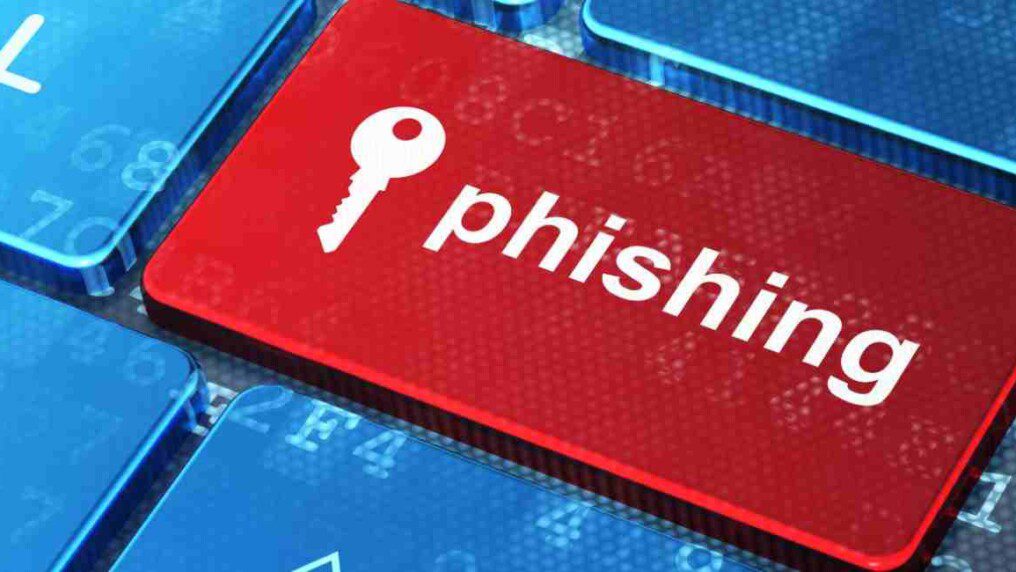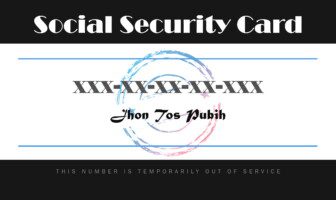
Phishing emails are fraudulent emails that appear to be from a reliable source (such as a business you are familiar with) but are really sent by cybercriminals. These messages are intended to obtain personal information, which can subsequently be used for identity theft or other frauds, such as card skimming using credit card information that has been taken. These scam perpetrators are constantly seeking methods to obtain your personal information so they may use it in future frauds.
You want to know if a phishing assault is intended for you or your business since you are aware that they pose a severe risk to both of you. Examining what is a common indicator of a phishing attempt enables you to identify them before they become a problem.
How To Spot An Phishing Attempt Easily?
To understand what is a common indicator of a phishing attempt, then you need to learn the signs first. Therefore, here’s a list of signs to look out for while spotting phishing attempts:
1. Phishy Errors In Spelling And Grammar
Grammar and spelling mistakes in email content are typical signs of a phishing effort. This is due to the fact that most emails coming from unreliable sources are not authored by experts. This indicates that there are no spell-checking tools on their servers and no formal editing or proofreading procedure.

Professional firms, on the other hand, take extra care to spellcheck their emails before sending them. Additionally, they have employed qualified copywriters to design their email marketing campaigns.
2. Odd And Phishy Tone
One sign that phishing is being attempted is the strange tone of an email. It’s crucial to keep in mind that there are a variety of methods to recognize this. Therefore, it’s critical to be aware of the many forms of strange tones.

A sign of an unusual tone in an email is when it seems as though it was written by someone you don’t know very well. The email’s tone, for instance, could not be what you’re used to hearing from your firm or other connections.
The email doesn’t seem to be connected to anything happening in your life, which is another indicator.
3. You Got The Mail At A Phishy Time
Another sign is when you receive an email from the sender at a time when you don’t often receive them.

Getting an email from your employer after 11 p.m. when you’re used to getting work-related emails during regular business hours might indicate that your inbox has been the target of a phishing scam.
Additionally, it’s probably out of the ordinary if someone emails you in the middle of the night on a Saturday or Sunday.
4. It Seems Phishily Urgent
Another indication that an email is malicious is if it threatens you or induces a sense of urgency. This may be a warning that your account is going to be suspended or a demand that you react within 24 hours or risk having your security compromised.
This might be a phishing effort if the message gives you the impression that something horrible will occur if you don’t answer right away.

For instance, a message threatening to suspend your account if you don’t confirm your data might be a fraudulent indicator.
5. The Attachments Seem Phishy
A strange attachment is a frequent sign of a phishing effort. These files are frequently sent via phishing emails by the bad guys since they are aware that many recipients are intrigued enough to view them and click on any links or buttons they may contain.

These attachments may be, for instance, a Word document or a zip file. However, opening a lousy attachment might infect your computer with malware that takes your login information. Don’t click on any suspicious attachments in emails that you receive!
6. The Phisher Starts It First
Scammers or hackers will frequently start phishing attempts by sending emails to random recipients in the hopes that someone will fall for them. The email could be a phishing attempt if you didn’t start the discussion.

Many cold emails promise the receiver a reward, say they qualify for one if they react soon away, and lose all eligibility if they don’t. This is done to attract the recipient. So there is a higher chance that the email will be spam in circumstances when the receiver is not a current or past client.
7. Phishy Links And Domain Names
Frequently, the email address used to send phishing emails does not match the domain name or website of the actual company being impersonated. For instance, you should be suspicious if you get a message claiming to be from Microsoft, but it was really received from a @gmail.com or @yahoo.com email address.

Checking sure the email addresses used to send the messages to correlate with past correspondence is another smart move. If the email contains hyperlinks, hover your cursor over each one to see the URL it will direct you to. If a link in an email purporting to be from Amazon takes you to a completely unrelated website (such as freeamazongifts.ca), it is usually proof of fraud.
8. Phishy Hyperlinks

Email coding is a recent technique used by scammers and fraudsters. They are aware that consumers are becoming more intelligent and will not click on a link in an email. As a result, these scammers encode the entire email as an HTML hyperlink. The entire email becomes clickable when it is fully coded as a hyperlink. This indicates that every click within the email message sends the user to the impostor’s website.
9. Phishy Requests

Most phishing scams start with an email or other contact that requests that you respond. It may be fair to ask you to confirm or amend your personal information, for example.
On the other hand, some phishing attempts try to lure you into doing things that seem illogical or unbelievable, such as using an unfamiliar payment method to pay a bill or giving your login information to an unknown person for verification.
10. It’s Phishily Brief
Even brief phishing emails might trick you into believing they are authentic since not all of them are lengthy and comprehensive. These quick emails frequently begin with “here’s your desired information” and then promptly attach malware files. They are typically succinct and to the point.

For instance, con artists would produce fake emails that look to be from a reliable vendor or supplier and are actually from Peter of XYZ organization. These emails may contain ambiguous demands for information packaged with an attachment labeled “further information” in an effort to trick the recipient into clicking on it and jeopardizing the security of their machine.
Frequently Asked Questions (FAQs):
Here are some commonly asked and answered Q&A regarding what is a common indicator of a phishing attempt.
Ans: Heb most common phishing techniques are:
1. Email Phishing
2. Whaling
3. Angler Phishing
4. Spear Phishing
Ans: Without question, the “security awareness” door is the one that cybercriminals are using the most. More precisely, the effectiveness of these assaults is mainly due to a lack of staff education on problems like phishing and ransomware.
Ans: The phrase refers to the employment of more sophisticated lures to “fish” for users’ sensitive information. It is a fishing-related word that was influenced by phreaking. Legislation, user education, public awareness campaigns, and technological security measures are all attempts to stop or lessen the effects of phishing occurrences.
Catch The Phisher Before You Get Phished!
Getting your workers to learn what is a common indicator of a phishing attempt before they click on a malicious link or open an attachment is one of the significant obstacles in safeguarding their personal information, such as their social security number and contact information, from being targeted by phishing emails.
Helping them comprehend the value of security awareness training and how email security may prevent them from being duped by a phished email is a critical component of that.
Read Also:




























